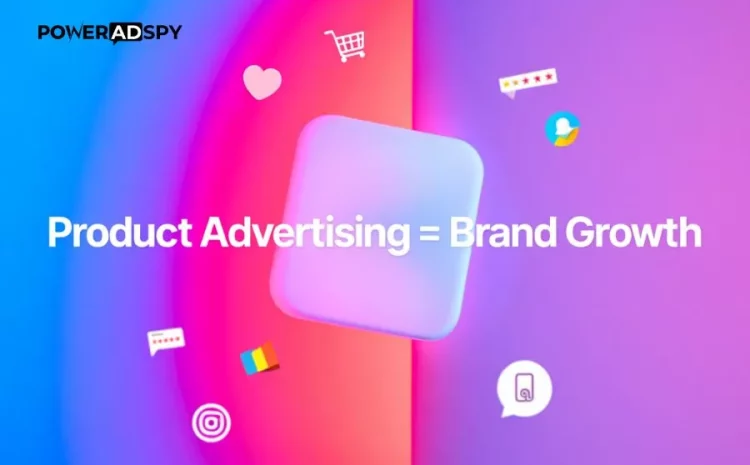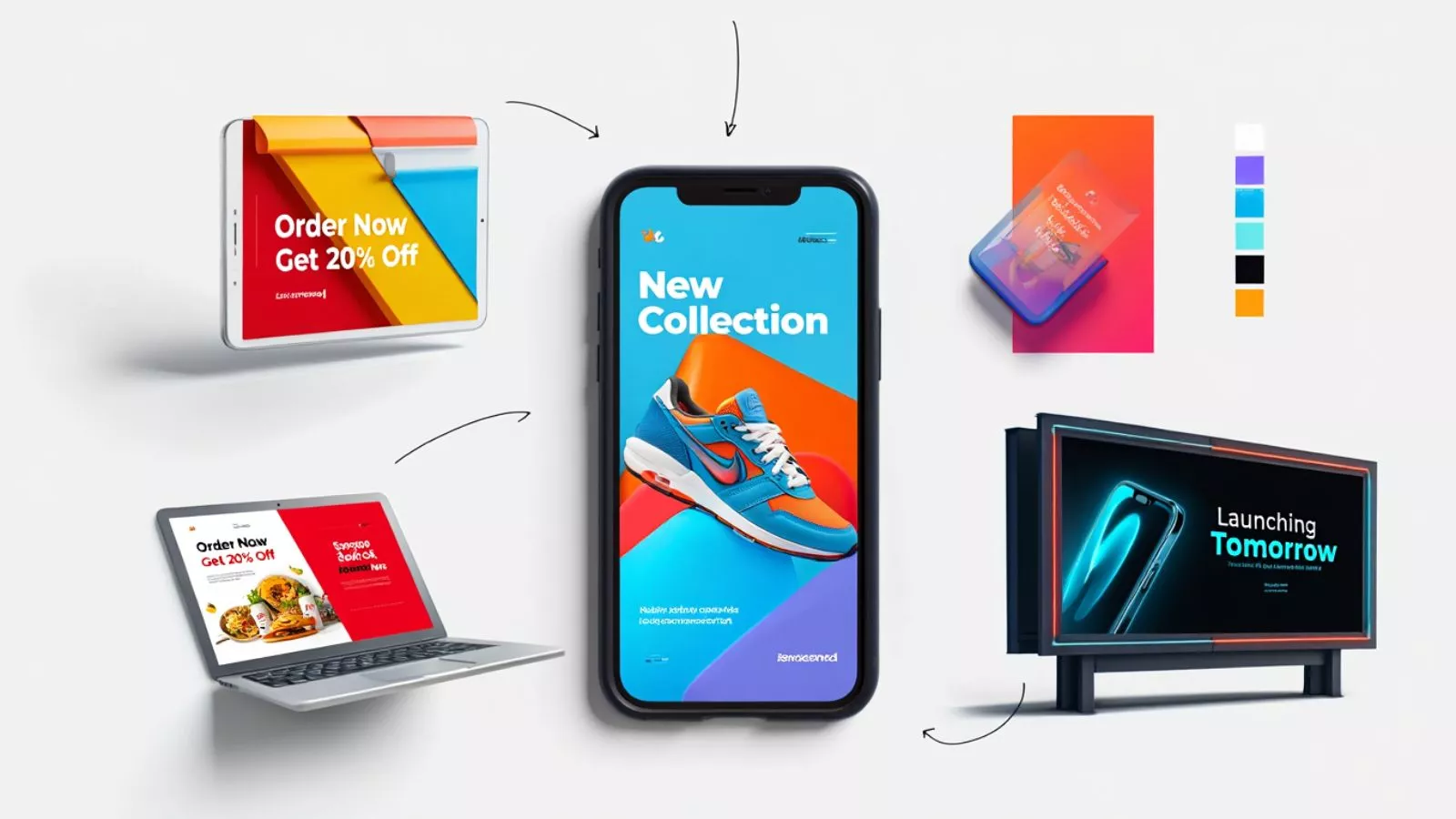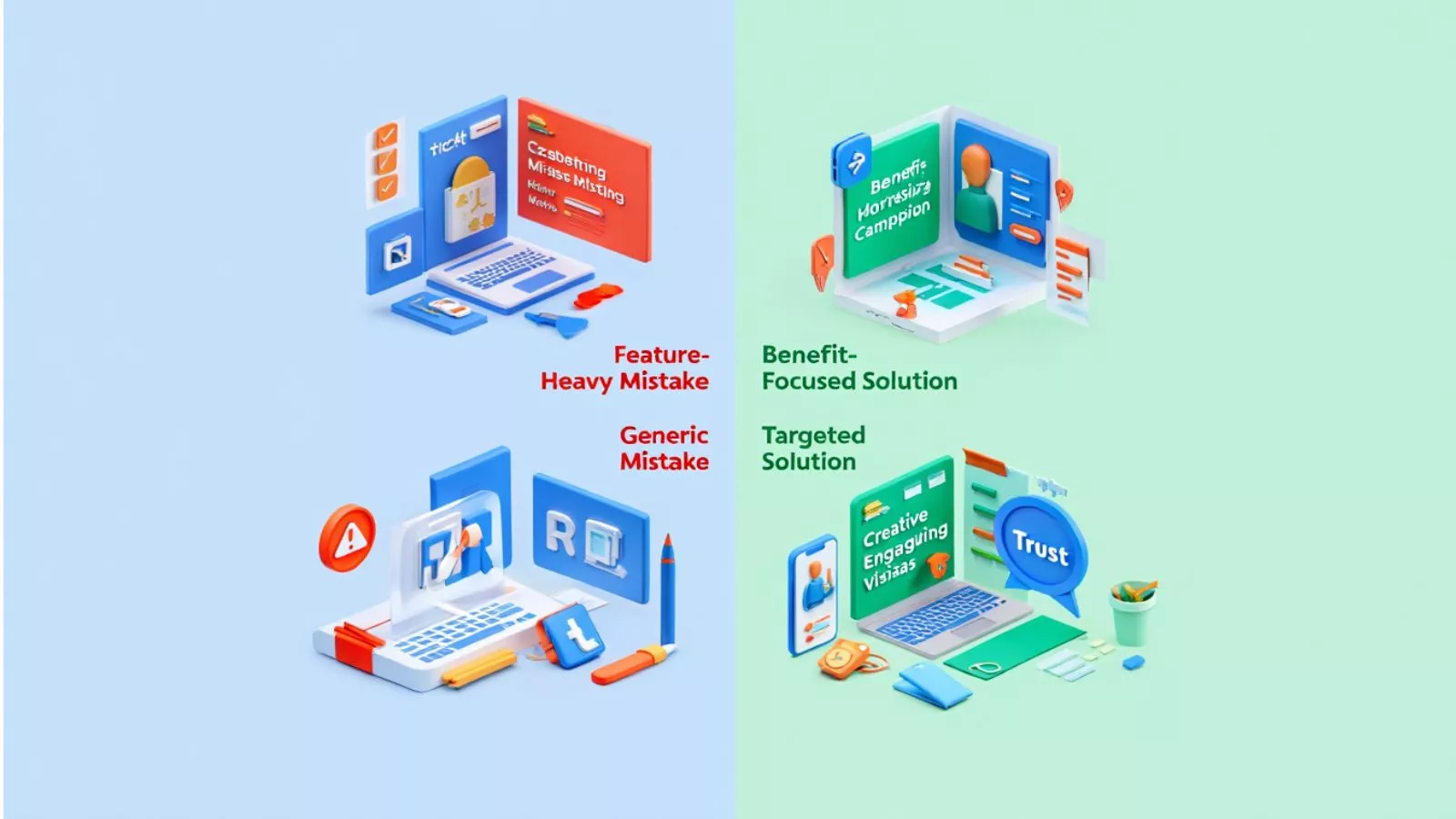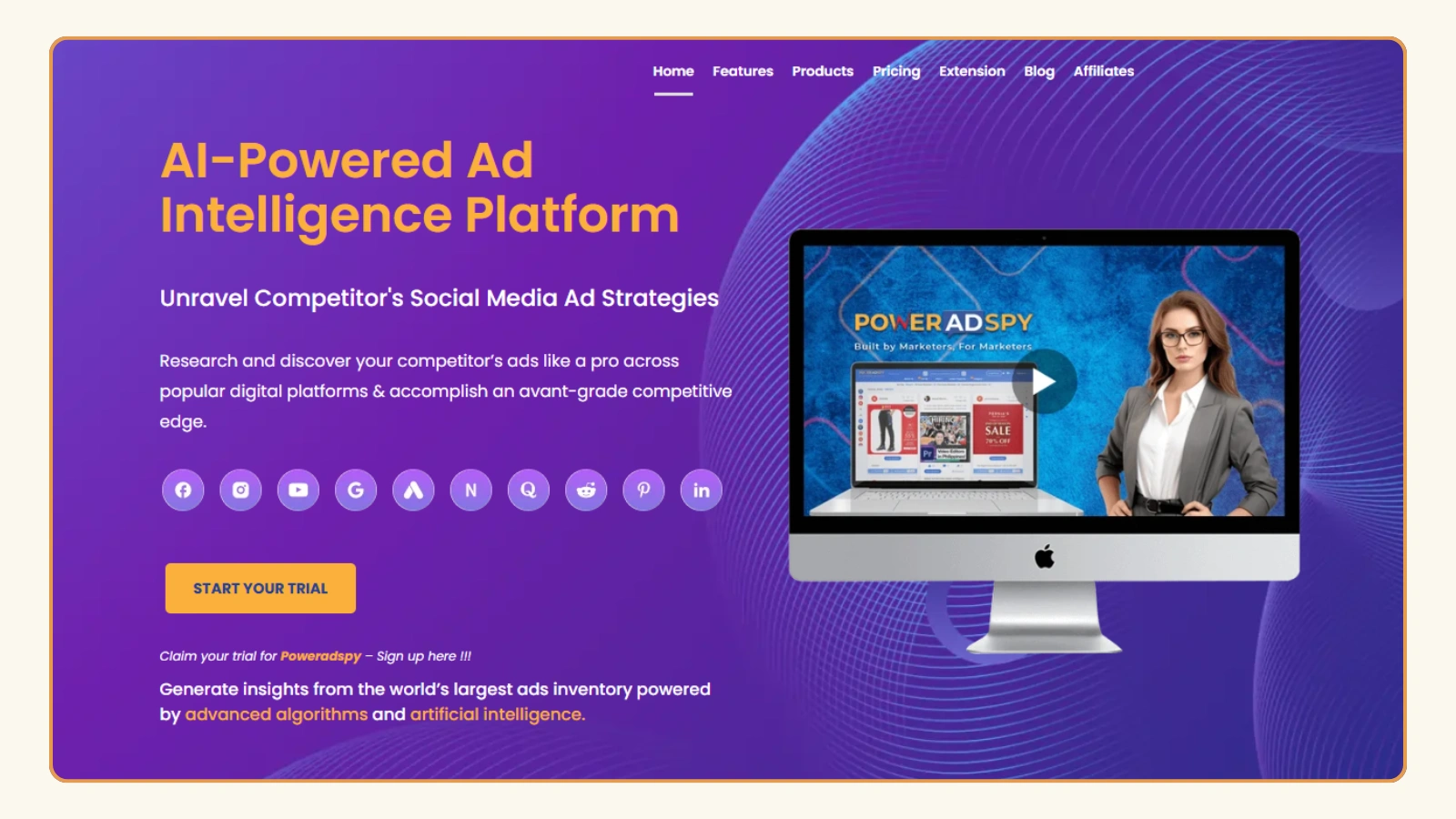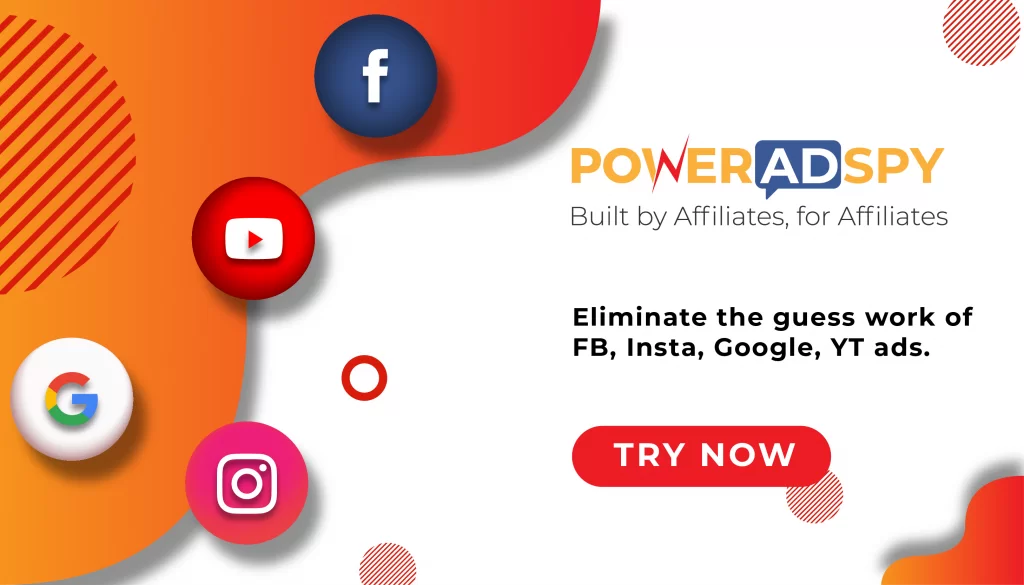How To Use Product Advertising To Grow Your Brand?
In today’s competitive marketplace, standing out is harder than ever. Customers are constantly bombarded with messages from countless brands, making it challenging for businesses to capture attention. That’s where product advertising comes in.
Unlike broad branding campaigns, product ads are designed to showcase specific products, highlight their benefits, and persuade customers to make a purchase. From social media to TV commercials, these ads play a critical role in shaping buying decisions.
The real magic of product advertising lies in its ability to build awareness, establish trust, and directly connect with consumers. When done right, it doesn’t just increase sales in the short term but also contributes to long-term brand growth.
In this guide, we’ll explore what makes product advertisements effective, the different strategies businesses can use, and how tools like PowerAdSpy can help brands create smarter campaigns that actually drive results.
What Is Product Advertising?
At its core, product advertising is a marketing strategy that focuses on promoting a specific product or service to potential buyers. Instead of just showcasing a brand’s image, these ads highlight the features, benefits, and unique selling points of a product to encourage customers to take action.
The main goal of advertising is simple: make people aware of a product, show them why it’s valuable, and convince them it’s worth purchasing. For example, think about the ads you see for the latest smartphone, a trending pair of sneakers, or even a food delivery app. Each of these is designed to push one clear message about why that product is the best choice for you.
It’s important to note that product advertisements are different from brand advertising. While brand ads build long-term reputation and identity, product ads are more direct and focused on sales. Together, both approaches create a strong foundation for business growth.
Why Product Advertising is Crucial for Brands in 2025?

In 2025, the market is more competitive than ever. With countless brands vying for consumer attention, product advertising has become a key tool for standing out and driving sales. Simply having a great product is no longer enough; you need to show potential customers why it matters and why they should choose it over others.
One reason advertising is so crucial is the rise of digital platforms. Consumers now spend hours scrolling through social media, exploring online stores, and comparing products. Well-crafted online store advertising ensures that your offerings get noticed in this crowded digital space.
Another factor is customer expectations. Shoppers today look for clarity; they want to understand a product’s benefits quickly before making a decision. Effective product ads deliver that information clearly, creating trust and encouraging conversions.
Finally, advertising supports long-term brand growth. While immediate sales are important, consistent product campaigns build recognition, loyalty, and credibility over time. For businesses that want to stay ahead in 2025, investing in smart product advertising is not optional, it’s essential.
Types of Product Advertising
Understanding the different types of product advertising can help brands craft campaigns that resonate with their audience. Each type serves a specific purpose and can be combined for maximum impact.
- Informative Product Ads
These ads focus on educating consumers about a product. They highlight features, specifications, and how the product solves a problem. For example, a tech company might run an informative ad explaining the new functions of its latest smartphone. Informative ads are ideal for new products or innovations. - Persuasive Product Ads
Persuasive ads aim to convince consumers that a product is the best choice. They often focus on benefits, unique selling points, and comparisons with competitors. For instance, an ad showing why one brand of sneakers is more comfortable and durable than others is a persuasive approach. - Reminder Ads
These ads keep your product top-of-mind for consumers. They are often used for well-established products to maintain awareness and encourage repeat purchases. Examples include social media posts, email campaigns, or retargeting ads for products customers have previously shown interest in. - Real-Life Product Advertising Examples
- A visually striking Instagram ad showcasing a fashion brand’s new collection.
- A YouTube ad demonstrating a kitchen gadget’s features in action.
- Banner ads highlighting discounts on e-commerce platforms during seasonal sales.
By combining these types strategically, brands can create comprehensive advertising campaigns that inform, persuade, and remind consumers effectively.
Benefits of Product Advertising
Effective product advertising offers numerous advantages for businesses, from boosting sales to building a strong brand presence. Here are the key benefits:
- Builds Brand Recognition
Even a single well-executed product ad can increase awareness about your brand. When consumers repeatedly see your products showcased creatively, they begin to recognize and trust your brand, making future purchases more likely. - Boosts Customer Trust and Loyalty
Clear and honest advertising of products helps customers understand what they’re buying. When people know what to expect, they feel confident, which builds trust and encourages repeat purchases. - Drives Conversions and Sales
The primary goal of advertising is to convert interest into action. Highlighting features, benefits, and real-life use cases persuades consumers to make a purchase, directly impacting revenue. - Strengthens Market Positioning
Well-targeted product ads differentiate your offerings from competitors. By showcasing unique selling points, brands can position themselves as leaders in their niche and attract a loyal audience. - Supports Marketing Strategy
Product advertising complements broader marketing campaigns. Whether it’s boosting social media engagement, supporting email campaigns, or running targeted online ads, these campaigns integrate seamlessly with overall brand strategies.
Investing time and resources into creating high-quality e-commerce product marketing and advertising ensures long-term growth, increased market share, and stronger customer relationships.
Common Mistakes In Product Advertising
Even experienced marketers can make errors when running advertising campaigns. Avoiding these common pitfalls can save money, time, and effort while ensuring your ads perform effectively.
- Focusing Too Much on Features, Not Benefits
A common mistake is highlighting only what a product has instead of how it helps the customer. For example, mentioning that a blender has 10 speed settings is less compelling than showing how it makes smoothies perfectly every time. Great product ads connect features to real-life benefits. - Ignoring Target Audience Insights
Failing to understand your audience leads to generic campaigns that don’t resonate. Identifying demographics, preferences, and pain points ensures that your advertising of a product speaks directly to the people most likely to buy it. - Lack of Creativity
Plain, repetitive ads fail to capture attention. Eye-catching visuals, storytelling, and engaging formats make product advertising memorable and shareable. - Overpromising or Misleading Claims
Honesty is critical. Overstating a product’s capabilities can damage credibility and harm long-term trust. Consumers quickly notice when expectations aren’t met, which can hurt brand loyalty.
By avoiding these mistakes, your advertising campaigns will be more effective, persuasive, and trustworthy, setting the stage for better results and stronger customer connections.
Also Read
How To Grow Your Business With Ecommerce Product Marketing
10 Proven Tactics For Online Store Advertising
How to Create Product Ads That Work?
Creating effective product advertising requires strategy, creativity, and a clear understanding of your audience. Here’s a step-by-step guide to designing ads that drive results:
- Know Your Audience
Understanding who will see your product ads is the first step. Identify demographics, interests, and shopping behavior. The better you know your audience, the more relevant and compelling your advertising becomes. - Highlight Benefits, Not Just Features
Consumers want to know how a product improves their lives. Instead of listing technical details, focus on the value the product brings. For example, instead of saying a laptop has 16GB RAM, show how it allows smoother multitasking and faster performance. - Use Engaging Visuals and Storytelling
People remember stories more than facts. Create visually appealing ads that tell a story about your product, showing real-life usage or scenarios where it solves a problem. Strong visuals paired with storytelling make your product advertising memorable. - Leverage Social Media Platforms
Social media offers a direct way to reach potential customers. Use targeted campaigns, short videos, carousel ads, and interactive posts to showcase products effectively. Paid promotions also amplify reach, ensuring more people see your ads. - Test and Optimize
Continuously monitor ad performance. Analyze metrics like clicks, engagement, and conversions to determine what works. Make adjustments to visuals, messaging, or targeting to improve outcomes over time.
By following these steps, your advertising will not only attract attention but also convert viewers into loyal customers.
Product Advertising Strategies to Grow Your Brand

To maximize the impact of advertising, brands need clear strategies that align with their goals. Here are some effective approaches for 2025:
- Customer-Centric Campaigns
Focus on creating product ads that speak directly to your audience’s needs and preferences. Highlight how the product solves their problems or improves their lives. Personalized messaging helps build trust and increases conversions. - Seasonal and Event-Based Campaigns
Leverage holidays, seasonal trends, and special events to run timely product advertising campaigns. Limited-time offers or festive promotions create urgency and encourage customers to act quickly. - Test and Optimize Ad Creatives
Experiment with different visuals, copy, and formats. A/B testing allows you to identify which product ads resonate best and generate the highest engagement and sales. Regular optimization ensures continuous improvement. - Integrate Digital and Offline Channels
Use a mix of online and offline platforms for maximum reach. While social media and e-commerce ads capture online audiences, in-store promotions, flyers, and experiential campaigns reinforce your message. - Leverage Analytics and Insights
Monitor campaign performance with tools like PowerAdSpy. Analyzing competitor product advertisements and tracking engagement data helps refine strategies and focus on high-performing approaches.
By combining these strategies, businesses can create cohesive product advertising campaigns that drive brand growth, increase visibility, and foster long-term customer loyalty.
Digital Product Advertising In 2025
In 2025, digital platforms are at the heart of most product advertising campaigns. Online channels allow brands to reach a global audience, target specific demographics, and measure results with precision.
- Impact of AI in Ad Creation
Artificial intelligence is transforming how product ads are created and delivered. AI tools can generate personalized ad content, suggest optimal visuals, and even predict which products are likely to perform best with specific audiences. - Personalization and Targeted Campaigns
Consumers respond better to ads tailored to their preferences. By analyzing user behavior and purchase history, brands can deliver relevant product advertisements, improving engagement and conversion rates. - Competitor Analysis
Digital advertising allows brands to track competitors’ campaigns. Tools like PowerAdSpy make it easy to study the advertising of products, discover trending ad formats, and replicate successful strategies while avoiding mistakes. - Multi-Platform Approach
Digital product advertising spans social media, search engines, email, and e-commerce platforms. Integrating these channels ensures consistent messaging and maximizes reach. - Video and Interactive Ads
Video content and interactive ads are increasingly effective. Short demos, how-to videos, and engaging graphics make products more appealing, creating a lasting impression on potential customers.
Digital strategies are no longer optional—they’re essential. Brands that leverage data, personalization, and innovative formats in their advertising campaigns are the ones that thrive in 2025.
Tool Spotlight: PowerAdSpy
One of the most powerful tools for effective product advertising is PowerAdSpy. This platform helps marketers and businesses analyze competitor ads, discover trends, and identify winning strategies.
- Discover Winning Product Ads
PowerAdSpy allows you to explore top-performing product advertisements across various platforms. By understanding what works for competitors, you can design better campaigns for your own products. - Track Advertising of Products
With PowerAdSpy, it’s easy to monitor how competitors promote their offerings. This includes ad formats, messaging, visuals, and engagement metrics, giving you actionable insights to improve your own product ads. - Ad Spy Feature
The built-in ad spy functionality helps uncover hidden trends and emerging campaigns, ensuring you stay ahead in the competitive market. This feature is especially useful for planning digital product advertising strategies. - Benefits for Marketers and Businesses
From saving research time to generating creative ideas, PowerAdSpy streamlines the campaign creation process. Marketers can focus on optimizing ads, targeting the right audience, and increasing conversions.
Using tools like PowerAdSpy ensures your advertising is data-driven, competitive, and results-oriented, making it easier to grow your brand in today’s crowded marketplace.
Future of Product Advertising
The future of product advertising is exciting, with trends in technology, creativity, and consumer behavior shaping how brands communicate with audiences.
- More Focus on Storytelling
Consumers respond better to stories than just product features. Future product ads will increasingly use narratives that connect emotionally, showing how products fit into everyday life rather than simply listing specifications. - Rise of Interactive and Video-Based Ads
Interactive content and short-form videos will dominate advertising. Features like polls, quizzes, AR experiences, and product demos allow audiences to engage directly with products, increasing interest and conversions. - Data-Driven Campaigns
With access to more consumer data than ever, brands can create highly targeted campaigns. Personalized product advertisements will focus on the right audience at the right time, making ads more relevant and effective. - Integration with Emerging Platforms
As new social media platforms and digital channels emerge, businesses will explore innovative ways to showcase product ads, reaching audiences where they spend the most time online. - AI and Automation
AI-powered ad creation and automated optimization will continue to grow. Tools like PowerAdSpy can help marketers identify trends, track competitor product advertisements, and optimize campaigns for maximum ROI.
By embracing these trends, brands can ensure their product advertising remains modern, engaging, and capable of driving sustained growth in the years to come.
Conclusion
Product advertising is no longer just an optional part of marketing—it’s a critical driver of brand growth and customer engagement. Well-crafted product ads help businesses showcase value, build trust, and persuade consumers to make purchases, all while strengthening brand identity.
By understanding what makes advertising of products effective, avoiding common mistakes, and leveraging digital tools like PowerAdSpy, brands can create campaigns that not only attract attention but also convert it into measurable results.
The key is combining creativity with strategy: knowing your audience, highlighting product benefits, and using innovative formats to stand out in a crowded market. As digital trends evolve, businesses that adapt their advertising campaigns will continue to thrive and grow their brand presence.
Investing in smart, targeted, and data-driven product advertising ensures that your products don’t just reach customers, they resonate with them.
FAQs
Q1. What is product advertising in simple terms?
Advertising is a marketing strategy focused on promoting a specific product or service. It highlights its features, benefits, and value to encourage consumers to make a purchase.
Q2. How does product advertising help a brand grow?
Effective product ads increase awareness, build trust, and drive sales. Over time, consistent campaigns also strengthen brand recognition and customer loyalty, contributing to long-term growth.
Q3. What’s the difference between product ads and brand ads?
Product ads focus on promoting a specific product, showcasing its benefits and features, while brand ads aim to build a company’s overall image and reputation. Both work together for a strong marketing strategy.

